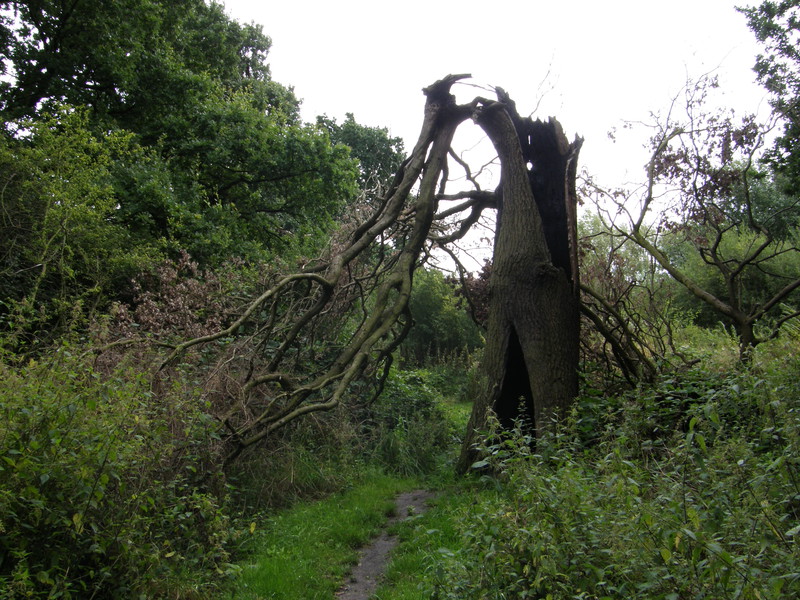
I was hoping that this, the last line on my tubewalk, would start with a bang rather than a whimper, but I've just got back from ten of the most tedious miles I've had to endure so far on this walk, and the only silver lining I can think of is that I'll never have to walk through this part of London again. I suppose there could be an element of fatigue creeping in after so many tube lines, and I'm certainly looking forward to finishing next week, because the novelty of walking through the suburbs has well and truly rubbed off. But I'm looking back through my photos from today, and apart from a couple of nice parks and Wembley Stadium, there's nothing but endless suburbia and industrial wasteland, and that doesn't make for good walking.
I'm sure things will get better further down the line, because central London is always entertaining, and I've been looking forward to exploring the Isle of Dogs and Greenwich for some time, but I guess today was the price I had to pay. When I walked this part of the Tube on the Metropolitan line, I chose to head east in a big loop, because although the Metropolitan and Jubilee lines share tracks between Finchley Road and Wembley Park, I knew I'd have to stick close to the line on this walk, and I didn't want to repeat myself. What a good decision that was; I can't imagine doing this part of the world twice. Once was bad enough...
Stanmore to Canons Park
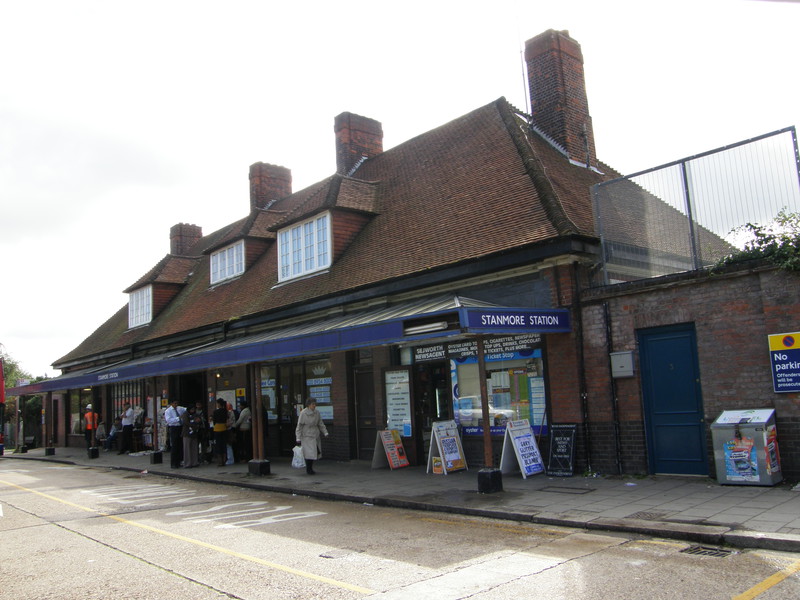
Things don't start out too badly, though. Stanmore station looks for all the world like a large suburban house complete with dormer windows and chimneys, and it just shows what different approaches the Metropolitan Railway and London Underground had to station design. Back in 1932, when the station was opened as the terminus of the Metropolitan's Stanmore branch, the Metropolitan Railway was a separate company to London Underground, and while it was building stations that looked like suburban houses, London Underground was building the futuristic Southgate and the modernist Arnos Grove. The following year, the Metropolitan Railway would be taken over by the London Passenger Transport Board and the Metropolitan line would become part of the Underground, and in 1939 the Stanmore branch was taken over by the Bakerloo line, before finally becoming part of the new Jubilee line in 1979.
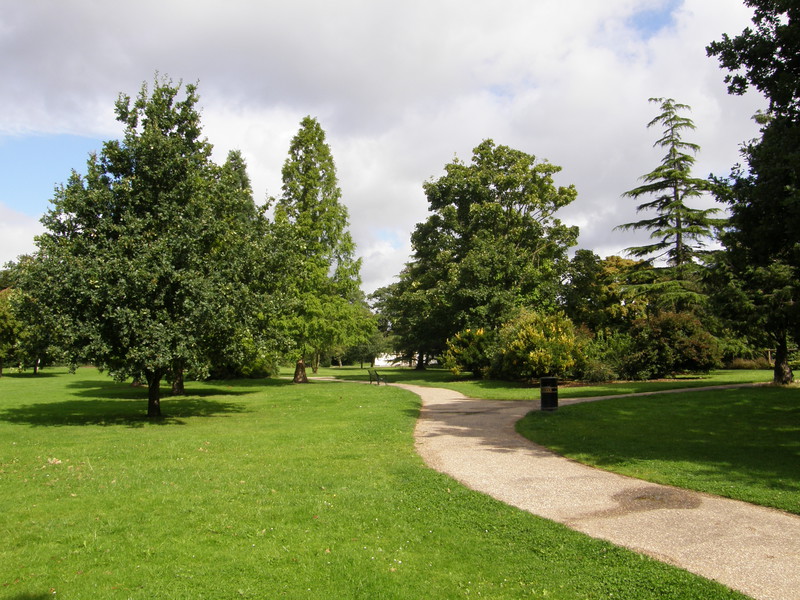
The suburban theme continues to the western side of the tracks, all the way along Merrion Avenue. It's probably best to get used to seeing entire streets of Identi-Kit inter-war suburban houses, because the same blight that affects the northwest reaches of the Piccadilly and Central lines affects the northern Jubilee line – their suburbs just aren't that interesting to walk through, though I'm sure they're perfectly pleasant for living in.
Luckily the suburbia doesn't go on forever, and at the bottom of the road is the lovely Canons Park, which was recently restored with funding from the Heritage Lottery Fund. My first introduction to the park was this rather worrying notice on the entrance gate:
Attention all dog owners
A male is targeting dog owners in this park and subjecting them to verbal abuse. Someone has also been placing meat in the park laced with pins. If eaten this could be extremely harmful to your dog. Please take extra care when walking your dog and help us catch the person responsible.
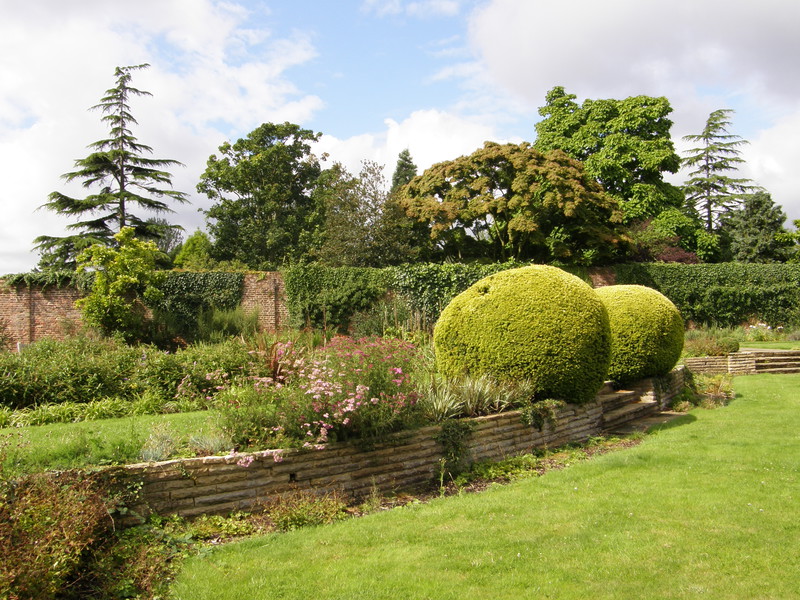
Despite this, the beneficial effect of the funding shows because it's a great little spot, with the walled King George V Memorial Garden in the centre of the park and lots of impressive trees spread across the lush lawns. This whole area was once the garden of a palatial home built by the First Duke of Chandos between 1709 and the late 1720s, and although nothing remains of that house, another mansion to the north of the park that dates from 1754 is now the North London Collegiate School. In the 1800s the garden was modernised by the new owner, the Solicitor General, under the direction of the ubiquitous Humphry Repton, and there's a white stone temple in the north of the park that dates from this period. It all makes for an enjoyable stroll south to the station.
Canons Park station is at the southwest corner of the park, past some houses and a flag-fluttering car-wash. There is practically nothing to see from the outside, just two entrances on either side of the railway bridge that carries the line over Whitchurch Lane, and it's no surprise to find that this is the least-used station on the whole line. It was originally called Canons Park (Edgware), and indeed, the Northern line's Edgware station is not far to the east, on the other side of the A5, though the suffix was dropped the following year when the line was merged into the rest of the Underground.
Canons Park to Queensbury
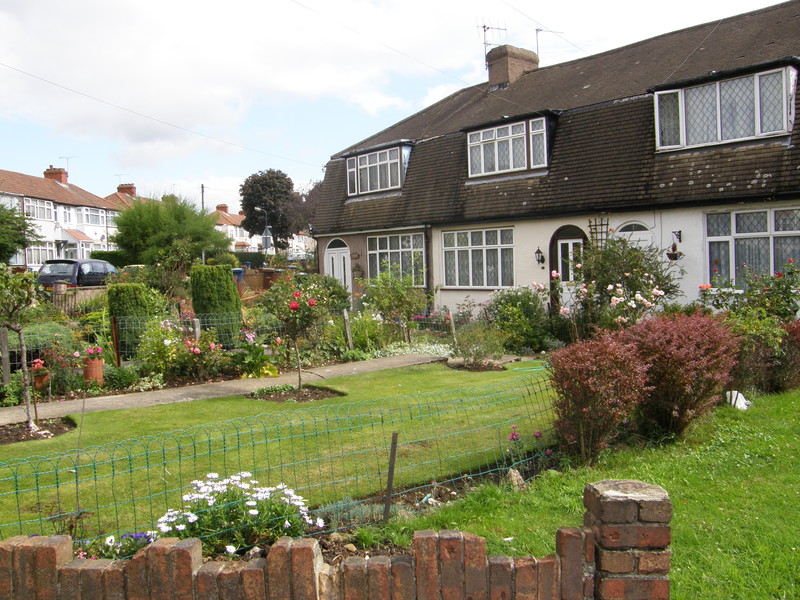
There's another stretch of fairly anonymous suburbia to the southeast of the station, along Buckingham Road and Chandos Crescent, where a friendly milkman stopped by the side of the road to ask me if I had the time, and to inquire whether I was lost (I guess the sight of someone studying a map and taking pictures of such unremarkable suburbia is a rare one). I wasn't, I replied, and he tootled off down the road in his float, whistling loudly; and smiling at this classic suburban image, I turned into Chandos Recreation Ground, the only interesting thing I'd been able to find between Canons Park and Queensbury. In the event, it turned out to be pleasant but nothing special, with wide open playing fields, tennis courts, a dilapidated pavilion that the council are fixing up, and not a lot else.
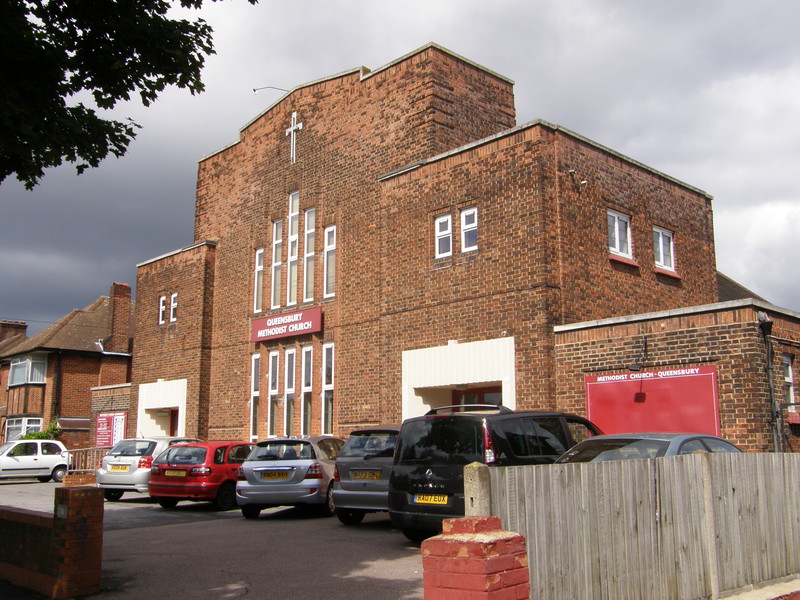
Still, any greenery is better than yet more suburbia, and although there are some nice houses in this part of town, for the most part it's just business as usual, and it felt like a long walk along Haverford Way and Cotman Gardens towards Queensbury. There's a huge roundabout on Mollison Way with a monstrous pub, the Flying Eagle, lurking on the corner, and Mollison Road itself sports a long row of shops, but from there to the station it's back into the suburbia. There are two imposing brick churches along the way and the houses are clearly from the 1930s, and this theme continues all the way to Queensbury Parade, a small grassy area to the east of the station. The council is planning to redevelop this area to make it more pedestrian-friendly, though it's already an attractive little spot.
Queensbury station was opened in 1934, two years after the neighbouring stations of Kingsbury and Canons Park, and the name is a complete invention; it was chosen to go with Kingsbury, plain and simple. The name Queensbury has since been adopted to refer to the area northwest of the station, a demonstration of the influence of the Tube out here in Metro-land, but the station itself is a fairly dull affair, with a simple entrance built into the huge 1930s block that houses the station and its neighbouring shops.
Queensbury to Kingsbury
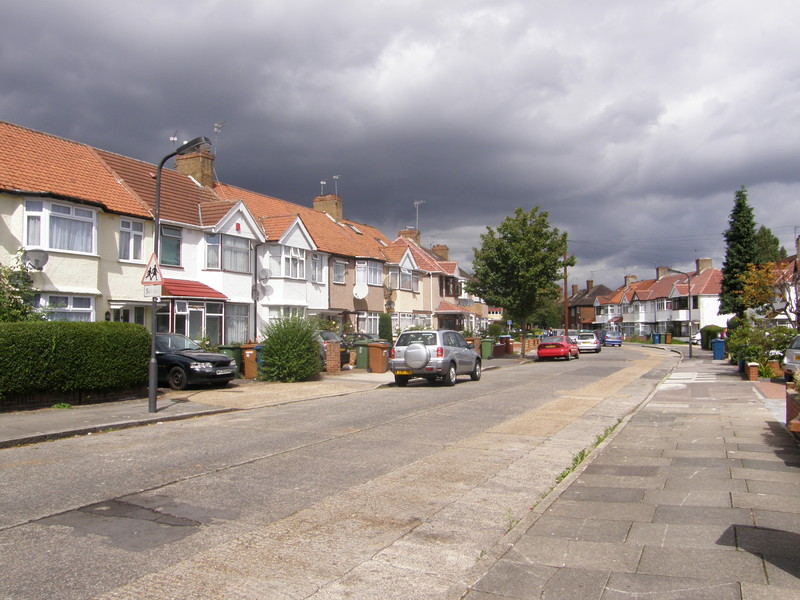
Not far south from Queensbury station, past a huge Morrisons supermarket and on the other side of the busy A4140, is Queensbury Park, another park that's perfectly adequate, but nothing terribly special. It's then a long slog through the suburbs of Clifton Road and along the busy A4006 Kenton Road, which is hardly the most exciting walking companion. Things perk up a bit at Kingsbury Circus, where the Kingsland Hotel stares over the roundabout at some intriguing modern apartments above a Tesco Express, and then Kingsbury Road takes over, with Mock Tudor shops introducing a long, wide road that's lined with the standard range of high street brands.
Kingsbury station is how Stanmore station might look if it was shoehorned into a row of terraced houses, though the shops on the ground floor rather scupper the house metaphor. Still, it doesn't look much like a train station, which is no bad thing when you're located in the middle of a bustling shopping street, so hats off to the designers for a clever piece of space management.
Kingsbury to Wembley Park
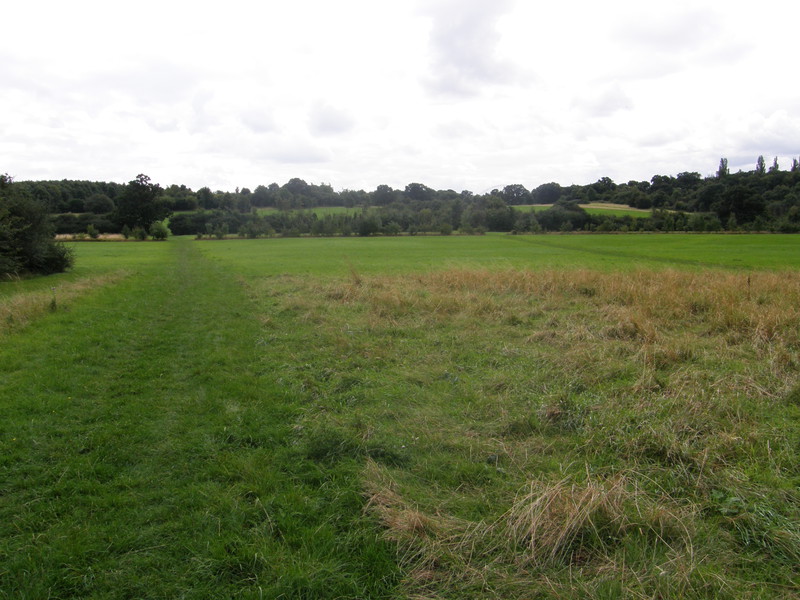
More semi-detached suburbia lines Valley Drive, though at a corner of Mock Tudor houses there's an escape route into the countryside, for this is the northern entrance into Fryent Country Park, which I last visited on my Metropolitan line walk from Wembley Park to North Harrow, way back on day three of my tubewalk. It's such a relief to spill out into proper countryside after street after street of housing, and the walk up to the top of the hill in the north of the park, which is crowned by a Capital Ring signpost, is short but sweet, with some great views to Stanmore in the north and Harrow to the west. The Ring heads west from here into the half of the park on the other side of Fryent Way, but I already walked that way back in June, so today I headed due south, eventually cutting through a rather damp wood to the junction of Fryent Way and The Paddocks.
The houses along The Paddocks are a step up from the suburbia north of the park, with some attractive and very large brick townhouses lining the road. Just around the corner is the monstrous Grade II-listed Brent Town Hall, and on the other side of the traffic jam that is Forty Lane is an equally monstrous 24-hour Asda superstore. The views of Wembley Stadium are good from here, and the excellent Wembley Park station, which I've already eulogised, is just down Bridge Road.
Wembley Park to Neasden
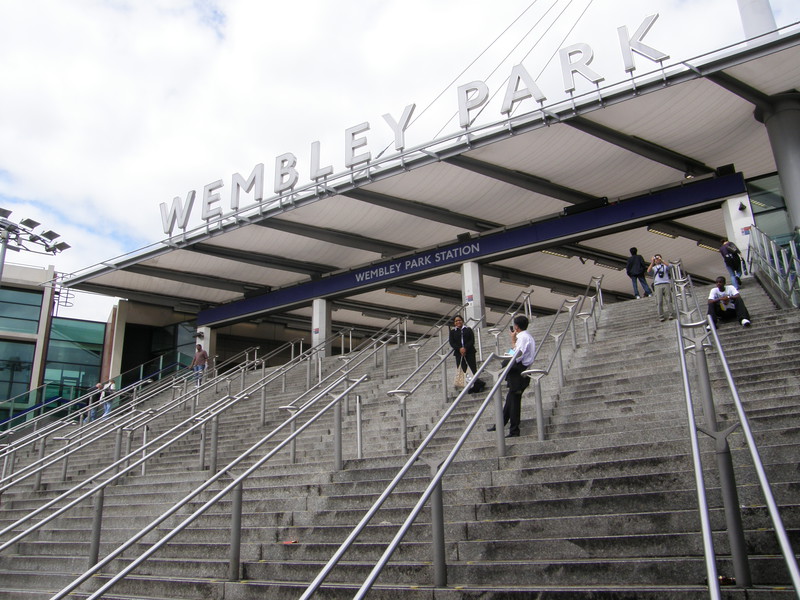
The easiest way to get to Wembley Stadium from the station is down the massive staircase to Olympic Way, the pedestrianised road that leads due south to the stadium. The last time I walked down here I shared the experience with 80,000 rabid Foo Fighters fans, but it's a different experience when you're pretty much alone. The stadium is still utterly imposing, but when you're stuck in a crowd it's difficult to appreciate just how huge it is; when it's just you, though, it makes you feel even smaller than normal.
The best way to appreciate the stadium up close is to walk up the ramps to the main entrance, and once inside, turn left and go up the stairs to the very top level, where the views towards Harrow and Neasden are impressive; you're up pretty high here. There's a statue of Bobby Moore, the captain of the England team that won the World Cup here in 1966, but probably most impressive is the chance to see the stadium's huge hoop up close, for this is where it's anchored to the rest of the structure. You can wander around the outside of the stadium to your heart's content (though you have to pay for a tour to go inside), and it's a shame to have to leave the clean steel and glass structure for the grittier reality of South Way.
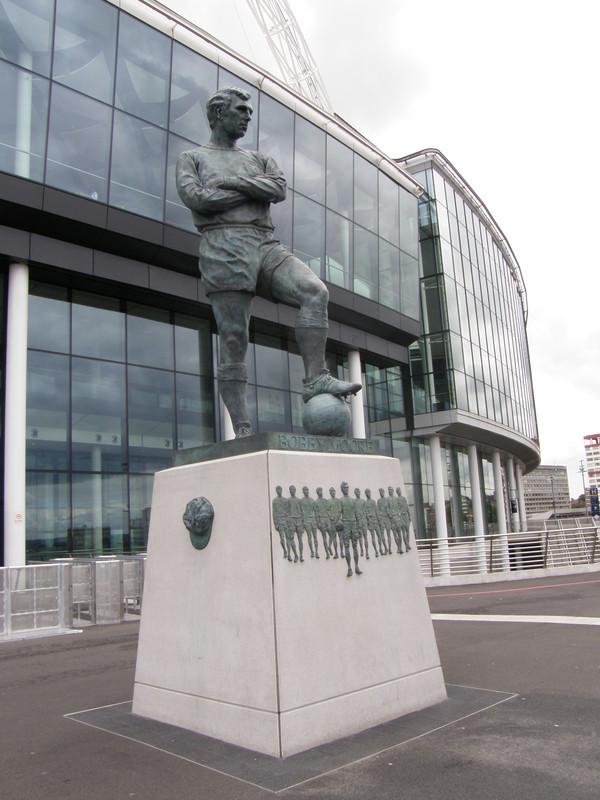
Wembley Stadium is surrounded by the industrial units of Wembley Park, and it's not a terribly pleasant place to walk through. Indeed, I was getting pretty bored walking past the faceless factories when I spotted a massive pile of car tyres off to the side of the road, and figuring that I might as well take a photo of anything vaguely interesting, I fished out my camera and started lining up the shot.
Suddenly I heard a cry of 'No, no, no!' and a rather large man ran out of a nearby security hut, waving his finger at me, so I put my camera down and gave him my best smile.
'Can I take a picture of those tyres?' I asked as politely as I could. 'I'm doing a charity walk and taking photos of interesting things along the way, and this is pretty cool. No problem if I can't, but it looks good. Would that be OK?'
I think he must have been from eastern Europe or Russia, as his accent was pretty thick, but he shrugged and said, 'Yes, sure, OK,' and went back to his hut while I turned back to the tyres.
I was just lining up the shot and getting ready to push the button, when suddenly, wham! He came at me from the right, yelling and screaming and trying to grab my camera, like Amy Winehouse on a bad day. I jumped out of my skin and threw my hands up, saying, 'Woah, woah, hang on, I'm not taking anything, relax!'
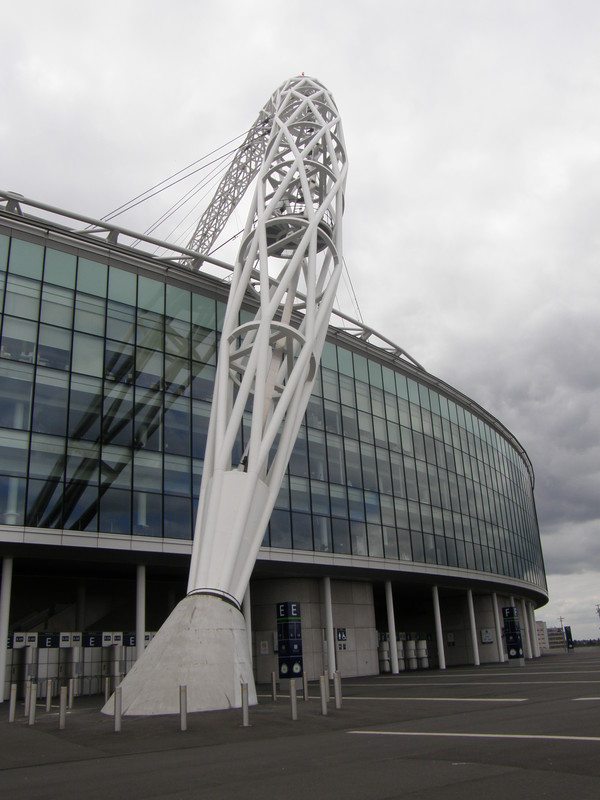
He looked at me with a vicious frown and waved me away, saying, 'No, no, you go,' while I stood there, checking that he hadn't managed to break anything. And then the blood ran to my head, and I started getting huffy.
'Hang on a minute,' I said, 'you can't just go attacking people like that. I asked you if I could take the photo, you said yes, and then you go and have a go at me? What's all that about? You said it was OK! What's wrong with you?'
He wasn't interested and kept waving me away, but even though I was starting to sound like Austin Powers saying, 'Who throws a shoe? Honestly!', my feelings were hurt and I felt violated, so I kept repeating 'But you said yes!' until he threw his hands up in the air and said, 'I go get boss.'
His boss was very friendly and said yes, of course I could take pictures of his tyres, and I could come inside if I wanted, so I snapped a couple of shots and thanked him warmly, while his KGB minder lurked inside his security hut in a huff. On reflection, I suppose I must have been having a different conversation with the security guard to the one the security guard was having with me, and he'd probably been trying to tell me I couldn't take a photo but didn't have good enough English, but I still find it hard to see how, exactly, he was saying no while appearing to say yes. I guess this is how wars start, and carrying a knife starts to look like a really bad idea; it's all a bit scary, really.
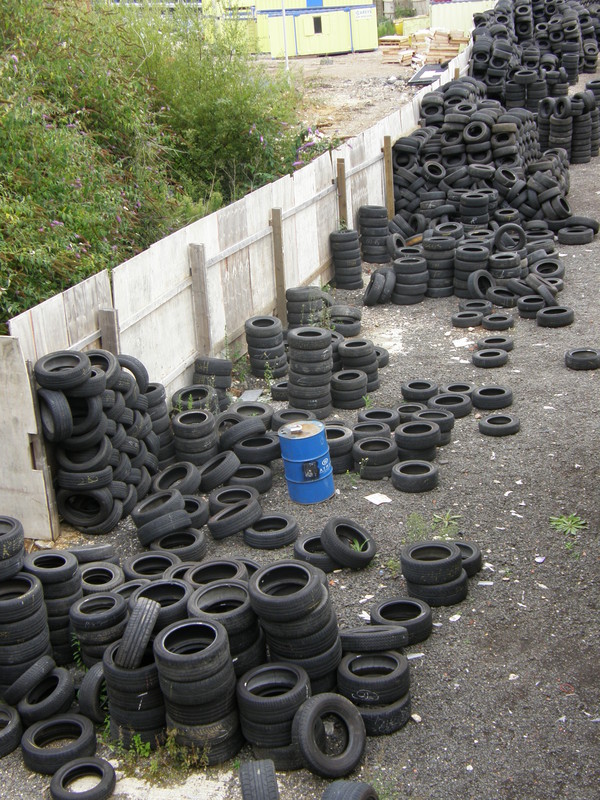
Things soon went from bad to worse, as this part of the world is really not pedestrian-friendly. The pavement ran out on the Great Central Way and I had to wait ages for a break in the constant stream of trucks, and I then had to walk for what seemed like miles to get to the other side of the North Circular Road, winding underneath the orbital road and walking in a large arc to join the pavement on the other side. I just wanted to leave this strange world of violent security guards and endless industry, but eventually I managed to cross the railway lines and head down Landsdowne Grove towards the station.
Neasden station was originally opened in 1880 as part of the Metropolitan Railway's extension from Willesden Green to Harrow-on-the-Hill, with the name Kingsbury and Neasden. This was changed to – wait for it – Neaden and Kingsbury in 1910, and the Kingsbury part was dropped in 1932 when Kingsbury station opened. This exciting history of name changes is more interesting than the station buildings, which sit fairly anonymously on busy Neasden Lane, though there is a good view down to the tracks from the road, with the ubiquitous bulk of Wembley Stadium as a backdrop.
Neasden to Dollis Hill
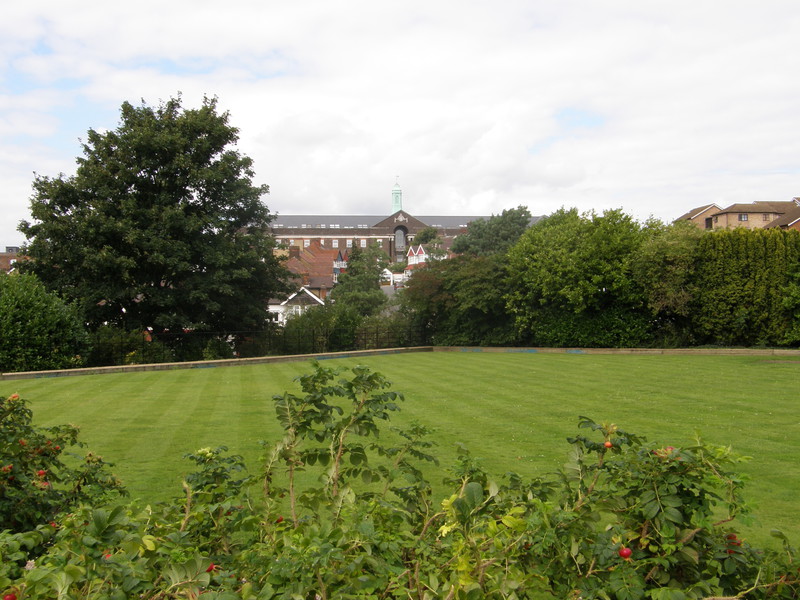
The houses in this neck of the woods have seen better days, and it's a relief to spill out of Prout Grove and Lennox Gardens into Gladstone Park, an attractive park that rises from train tracks, up the side of a hill and to a small lake and house on the summit. Unfortunately Dollis Hill House, which dates from 1825, is currently hidden behind scaffolding and plastic sheeting, but it's worth popping to the top for a glimpse of a deeply impressive and historic building to the north of the park. Topped by a green tower not unlike the one on Waltham Town Hall, this is the Post Office Research Station where Tommy Flowers and his team built the first Colossus computer over an 11-month period in 1943, thus creating the world's first programmable electronic computer. It was also where ERNIE (Electronic Random Number Indicator Equipment) was built in 1957 for picking Premium Bond winners, though these days it's home to exclusive apartments rather than epoch-defining boffins.
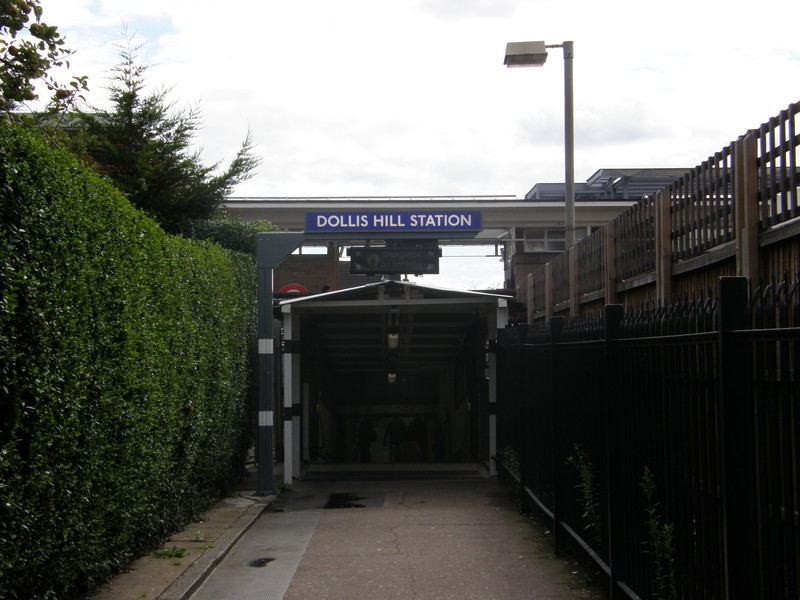
Dollis Hill station is at the southern end of Hamilton Road, which can be reached by a footbridge over the London Overground tracks. The entrance to the station is completely uninspiring, being little more than a dark passage leading underneath the tracks. When I arrived at the entrance, a staggering and rather fragrant black man lurched out into the passage, looking around with a slight air of panic as I stood there packing my daypack for the journey home. He completely ignored me, and with a sigh he unzipped his trousers, pressed himself against the wire fencing to the right of the entrance and jiggled around a bit; as I wrinkled my nose and quickly strode past him into the station, I could hear him sprinkling on the concrete floor while letting out a huge sigh of relief. At least we shared that sentiment, as I shot through the ticket barriers at the end of this rather disappointing day.